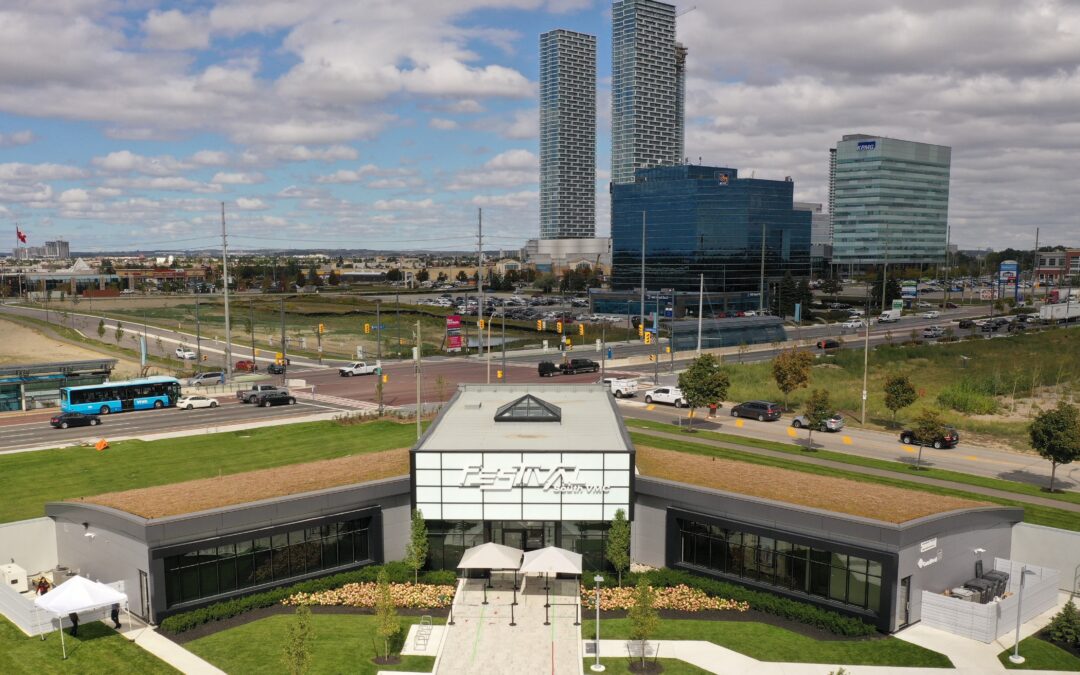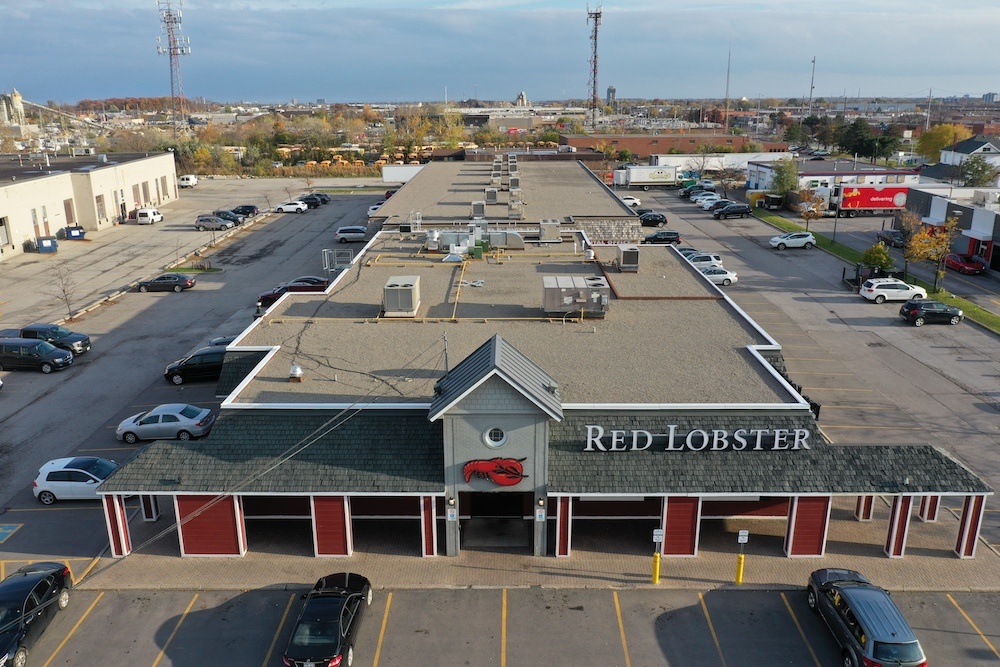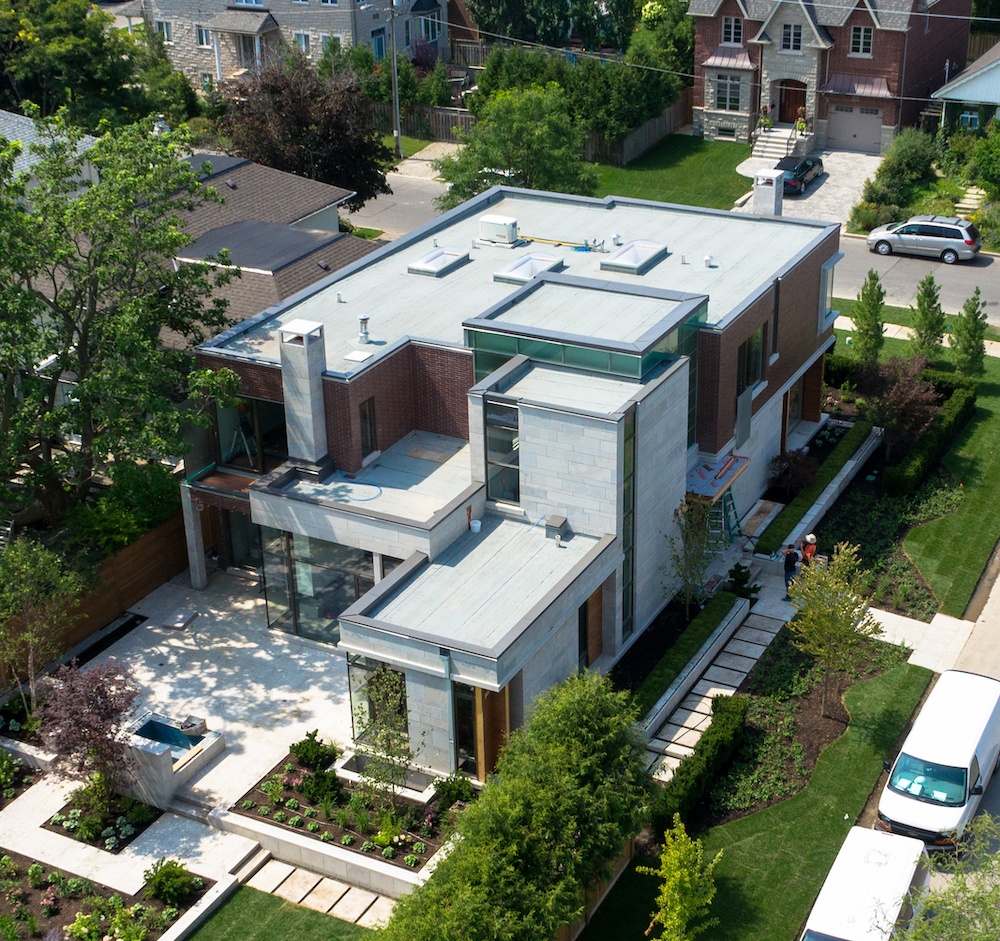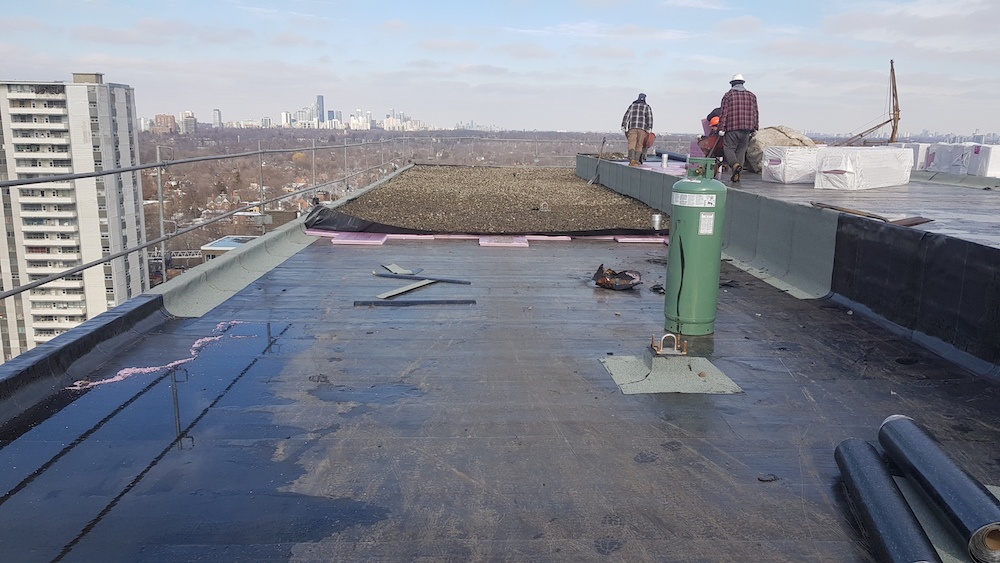How to Preserve the Value of Your Commercial Real Estate Investment
May 21st, 2021
As we feel inflation slowly creep up on us via rising raw material costs, shipping rates, labour, and commodities, many of us are changing or re-examining our short-term investment strategies.
In times like these, people love to hedge against future price increases by stocking up now – at today’s rate – in the hope that they can ‘ride out’ the temporary phenomenon and avoid paying inflated prices. We see this happening with food, gas, real estate, gold, silver, crypto, and, strangely enough, building materials such as lumber, steel, and copper. In some cases, retailers and service providers are doubling or even tripling up on inventory to accommodate this surge in demand; exacerbating the supply chain and pricing issues.
While it is important to have the items mentioned in stock, one can only buy so much food, gas, or commodities. Once a person or organization has set aside enough to weather a potential storm or meet a surplus in forecasted demand, they often look to hard assets such as real estate.
This is because owning your own land or property is typically a prudent investment decision and can form the backbone of a business’ operations. Tangentially, if you already own an industrial property, then investing in its ongoing maintenance and repairs acts like an insurance policy and store of value.
That is why last week, we asked a friend and roofing expert to share his thoughts and experience on how material cost increases are impacting his business, and those of his clients.
The consensus was that pricing is becoming unpredictable or difficult to forecast. And contractors are getting booked up far in advance. Therefore, if you have been considering assessing, repairing, upgrading, or replacing any part of your building’s structural or mechanical elements, then you may want to consider starting the process sooner than later.
Specifically, taking care of your industrial roof is worth considering if it has been many years since its last inspection. It is the membrane which protects your operations and maintains the integrity of the building itself. And it isn’t cheap to fix.
So with that said, this week, we sat down once again Roofing expert Howard Glowinsky of Elite Roofing to provide us with a bit of insight into his decades of experience helping clients… and what YOU need to know when looking to assess, maintain, repair, or replace your commercial roof…
Here is what Howard had to say…

1. Four or Five Ply BUR

A 4-ply roofing system consists of roof felts that are composed of four or five layers of reinforcement, hence their name. Each ply is embedded in a full mopping of asphalt bitumen. These materials provide both an adhesive and waterproofing membrane, while the 4-plies of felts are meant to provide reinforcement to the surface. The stone ballast provides an excellent weathering surface and protection from the ultraviolet (“UV”) rays of the sun.
This Roofing Membrane Is Great For:
- Building owners who want reliability: 4 & 5 ply BUR roof membranes have been used continuously for over 175 years, making this system one of the most reliable statistically.
- Peace of mind: The multi-ply redundancy is a safety factor and major advantage with this type of roofing membrane. Damage to the interior requires a penetration through multiple plies of membrane.
- Buildings that are in areas with lots of wind: the 4 & 5 ply BUR roof membranes are extremely wind resistant and perform better under such conditions.
- Insurance: This type of membrane yields a Class A fire rating requirement, which could mean savings on your building insurance.
- Odour is a big concern: Even though this kind of roofing membrane can be installed in a low-odour application, there is still the potential for some odour at ground level at the source of the bitumen if temperature is not tightly controlled. There is a workaround but it is best if expectations are established prior to project commencement.
- If your building is in a densely wooded area: Issues with roof top collections of algae, organic debris and dirt are most common with a ballasted system, because the gravel can trap dirt. The presence of ponding water makes this issue more problematic, but if you commit to routine maintenance with your roofing system, these problems can be easily avoided.
2. 3-PLY Hybrid BUR

Source: Elite Roofing, www.eliteroofing.com.
Hybrid BUR membranes are made by mopping together modified bitumen membrane and traditional glass fibre felt paper with hot asphalt. 3 ply hybrid systems create a watertight seam that can handle high and low temperatures beautifully.
This Roofing Membrane Is Great For:
- Peace of mind: The multi-ply redundancy is a safety factor and major advantage with this type of roofing membrane. Damage to the interior requires a penetration through multiple plies of membrane.
- If fire is a concern: Use of aggregate cover (pea gravel) yields a Class A fire rated assembly which exceeds building code requirement for Class C – this could bring some insurance savings to building owners.
- If time is of the essence: These systems marry 1 ply SBS base sheet with 2 plies of glass felt to enhance performance allow for quicker installation times.
- If your building is in a densely wooded area: The ballast (gravel) of the 3 ply hybrid system can trap vegetation if not routinely maintained. If you have this kind of roofing membrane ( or any roofing membrane for that matter), you should have routine scheduled maintenance in order to avoid issues in the future.
- If your building is in direct sunlight most of the time: Like the 4 & 5 ply, prolonged exposure to UV rays can degrade the quality of the roof membrane over time due to its darker colour. If temperature is a main concern, this may not be the right membrane for your structure.
3. 2-PLY SBS Modified Bitumen

Source: Elite Roofing, www.eliteroofing.com.
- Problematic installations: There are various hot and cold installation methods available allowing for great flexibility depending on project constraints.
- Buildings that have concerns with punctures: The 2-plies of roofing are approximately 8mm thick, allowing for a high level of puncture resistance compared to other membranes.
- Buildings in direct sunlight: White membrane options are available to meet “cool roof” designations, where needed, with a slight incremental cost. A cool roof can lessen a building’s energy consumption, especially during summer months.
- It’s the middle of winter, and you need a roof right away: These membranes require special cold weather application techniques during the winter months, so if repairs or replacement are urgent, then this isn’t the right membrane for your needs. If you are set on this kind of material, it needs to be installed expertly during the winter months or in usual methods of application during the rest of the year.
- You have concerns about workmanship: Seam failure can result from improper installation techniques that lead to seam voids or bad welds. If you are going with this membrane, make sure you are using a reputable company that has worked with this material in the past and is warranty certified with the membrane manufacturer.
4. 1 ply PVC/TPO/EPDM

Source: Elite Roofing, www.eliteroofing.com.
PVC membranes are a hard plastic roofing membrane that can withstand pressure from the elements and heavy use.
This Roofing Membrane Is Great For:
- Buildings where building codes mandate cool roof designations: White membrane options can often meet “cool roof” designations, where needed, with no incremental cost. A cool roof can lessen a building’s energy consumption, especially during summer months. The roofs need to be thoroughly cleaned regularly to maintain the cool roof solar reflectivity rating.
- Owners who do not want any open flame use on their project: No flame or torch at all – installation is done with adhesive and/or screws & plates (mechanical fasteners) and seams are hot air welded – but no flame. The installation can be done using low VOC adhesives and/or screws/plates together with hot air welding to meet safety concerns.
- Your structure has a lot of equipment on it: Single ply membranes are susceptible to punctures especially where there is extensive roof traffic or HVAC equipment. Vibrations from mechanical equipment can cause mechanical fasteners to back out, puncturing the membrane.
- You have routine traffic on your roof: This membrane is extremely slippery when wet, or icy and can be a huge hazard to your employees/service technicians if they frequent the roof, especially in the winter. Walkways are problematic as the sub-trades rarely use them as intended and they often create ponding water and potential blow-off issues.
- You have concerns about wind: Single-ply roofing is prone to damage from wind uplift. If the wind conditions are severe enough or if the membrane attachment method is deficient, a strong wind can tear off some or all of the roof membrane.
5. Inverted Roof Membrane Assembly “IRMA” or Protected Roof Membrane Assembly “PRMA”

An inverted roof refers to a flat roof where the waterproofing layer is underneath the thermal insulation as opposed to above it. Inverted roofs use insulation that can resist water absorption, which provides excellent thermal performance, and can reduce condensation.
This Roofing Membrane Is Great For:
- Buildings that have UV damage concerns : These systems can withstand surface traffic and remain protected from UV rays of the sun and mechanical damage.
- Building owners who want to make an investment: While inverted roofing systems are typically more costly, they last longer than traditional built-up roof systems. IRMA roofs are designed to have up to a 40-year life cycle. This assembly has excellent life-cycle costing. Initial up-front construction costs account for only 5 to 10 per cent of the building’s cost over its service lifetime; operating and maintenance costs account for 60 to 80 per cent.
- If your building is a high-rise: Inverted roofs are worthy of consideration for high rise projects because they protect the membrane from damage due to restoration projects including outrigger beams for swing stages and lifelines on roof anchors.
- Cold weather is a main concern: There are cold weather challenges to displace ballast to locate and repair leaks. When the ballast is frozen repairs become very complicated to execute properly.
- You have had issues with ponding water in the past: Some older inverted roof systems exhibit maintenance issues brought on by ponding water and displaced ballast. Ponding water lifts the insulation due to its buoyancy which in turn displaces ballast and can lead to insulation blow off risks. However, effective positive drainage can usually help to assuage the issues that come with inverted roofing systems and ponding water.
Overall, if you are an Investor, Landlord, Owner-Occupier, or Developer of commercial property in the GTA, then you must engage with a roofing professional to assess, inspect, maintain, repair, or replace your commercial or industrial roof.
***Disclaimer: The information provided in this newsletter is for educational purposes only. Howard is a certified expert, however, to receive the appropriate guidance for your unique situation, please consult the proper authorities before taking action. We are not liable for any damages – perceived or otherwise – as a result of your own personal decisions.***
On that note…
For further information on the subject of Commercial and Industrial Roofing in the GTA please contact:
Howard Glowinsky
howard@eliteroofing.com
https://www.linkedin.com/in/howard-glowinsky-1ab07314/
Elite Roofing Contractors Limited
https://www.linkedin.com/company/elite-roofing-and-contractors-limited/
www.eliteroofing.com
Elite Roofing has a rich Canadian heritage that stretches over six decades. Being a third-generation and family-run company, Elite Roofing prides itself on quality workmanship and exceptional customer service. In addition to their professional code of ethics, they meet all industry standards and safety regulations. Elite Roofing is a multiple-award-winning recipient of the Industrial Roofing Safety Performance Award.
To read the original article on Elite Roofing’s blog, go here.
Conclusion
The bottom line is: if you want to manage the cost of repairing or replacing your roof… or any part of your building, for that matter… then you must bid out your project as soon as possible. At the end of the day, all contractors are limited by the prices they have to pay to acquire the raw materials in the first place, as well as the wages they must pay their workers or sub-contractors.
In conclusion, most of what I have personally learned about industrial roofing I learned from Ike and Howard Glowinsky of Elite Roofing Contractors. They have been providing services to many of my clients over the years; and how I met them in the first place.
Howard was also gracious enough to provide insight and information for this newsletter. He is a true expert and would be able to further clarify and/or provide you guidance if you are considering maintaining, repairing, or replacing an industrial roof… So if you are looking for more detail on this or anything else related to roofing, then please connect with Howard directly (his contact info is above).
Finally, for a confidential consultation or a complimentary opinion of value of your property please give us a call.
Until next week…
Goran Brelih and his team have been servicing Investors and Occupiers of Industrial properties in Toronto Central and Toronto North markets for the past 25 years.
Goran Brelih is a Senior Vice President for Cushman & Wakefield ULC in the Greater Toronto Area.
Over the past 27 years, he has been involved in the lease or sale of approximately 25.7 million square feet of industrial space, valued in excess of $1.6 billion dollars while averaging between 40 and 50 transactions per year and achieving the highest level of sales, from the President’s Round Table to Top Ten in GTA and the National Top Ten.
Goran is currently serving as Immediate Past President of the SIOR ‐ Society of Industrial and Office Realtors, Central Canadian Chapter.
Specialties:
Industrial Real Estate Sales and Leasing, Investment Sales, Design-Build and Land Development
About Cushman & Wakefield ULC.
Cushman & Wakefield is a leading global real estate services firm that delivers exceptional value by putting ideas into action for real estate occupiers and owners. Cushman & Wakefield is among the largest real estate services firms with 48,000 employees in approximately 400 offices and 70 countries.
In 2017, the firm had revenue of $6.9 billion across core services of property, facilities and project management, leasing, capital markets, advisory, and other services. To learn more, visit www.cushmanwakefield.com or follow @CushWake on Twitter.
For more information on GTA Industrial Real Estate Market or to discuss how they can assist you with your real estate needs please contact Goran at 416-756-5456, email at goran.brelih@cushwake.com, or visit www.goranbrelih.com.
Goran Brelih, SIOR
Senior Vice President, Broker
Cushman & Wakefield ULC, Brokerage.
www.cushmanwakefield.com
Immediate Past President, SIOR – Central Canada Chapter
www.siorccc.org
Office: 416-756-5456
Mobile: 416-458-4264
Mail: goran.brelih@cushwake.com
Website: www.goranbrelih.com


